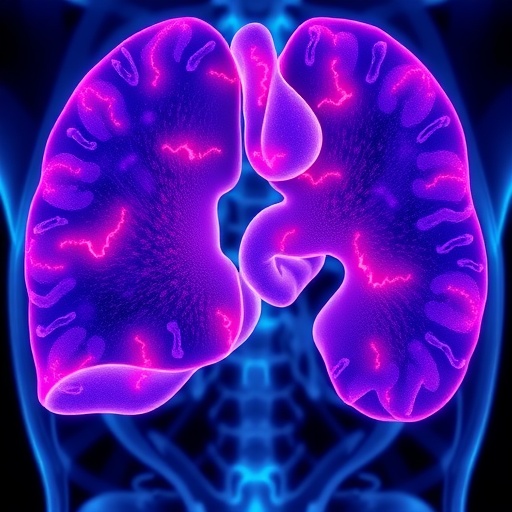
The exploration of childhood trauma has taken an unconventional turn, reaching its way into the realm of superhero narratives through a recent study conducted by the University of Calgary’s Faculty of Nursing. This innovative research takes a deep dive into the adverse childhood experiences (ACE) faced by iconic characters from both the Marvel and DC cinematic universes. By analyzing 28 characters across various films, the researchers aimed to determine whether high scores on ACE questionnaires correlated with a path toward heroism or villainy.
Adverse childhood experiences encompass a wide range of potentially traumatic events that may occur during the formative years of an individual’s life. The traditional framework suggests that severe instances of trauma, such as abuse or neglect, could predispose individuals toward harmful behaviors or even criminality. However, the implications of the University of Calgary study challenge this assumption, positing that high ACE scores do not necessarily dictate a character’s moral alignment.
The inquiry centers on a vital question: does trauma shape one into a hero or a villain? Researchers applied ACE scores to beloved characters like Spider-Man, who thrives on the guilt stemming from his childhood trauma, juxtaposed against figures like Heath Ledger’s Joker, who embodies chaos and malevolence rooted in deep-seated abuse. Interestingly, the findings of this study suggest that while trauma can influence behavior, it does not serve as a definitive predictor of whether a character becomes a hero or a villain. This signifies a nuanced understanding of morality within popular narratives.
Dr. Jennifer Jackson, an assistant professor involved in the study, emphasizes the unique opportunity this research presents. Using the lens of superhero tales could allow for productive conversations about problematic subjects like childhood trauma and abuse. By engaging children with these fictional characters, the researchers hope to create an accessible forum to discuss mental health issues without the typical stigma surrounding them. Jackson argues that these narratives can foster hope, indicating that individuals can overcome their traumatic histories.
While the original hypothesis suggested a clear correlation between high ACE scores and villainous behaviors, the study revealed a more complex landscape. Among the array of characters studied, Black Widow emerged with the highest ACE score, yet she aligns firmly within the heroic camp. Conversely, villains like Loki, who enjoyed the comfort of privilege and love during his upbringing, depict a significant divergence from expected outcomes. It becomes evident that individual choice plays a pivotal role in defining character trajectory, overshadowing the impacts of early life adversities.
The research involved analyzing various superheroes and villains, taking care to ensure diverse representation by incorporating characters of different genders and ethnicities from both comic book giants. The project showcases characters such as Wonder Woman, giving a voice to themes of empowerment, resilience, and the potential for goodness despite early trauma. On the other hand, complex figures like Harley Quinn and Killmonger from “Black Panther” are also explored, demonstrating the duality of experience and outcome in character development.
The study’s findings encourage a reframing of discussions around trauma, steering away from deterministic narratives that imply trauma unequivocally leads toward villainy. Instead, it invites a more compassionate understanding that values individual agency. The implication here is that even those with substantial childhood hardships can chart paths toward heroism; this challenges prevailing stereotypes and evokes deeper dialogues about the human condition.
What distinguishes the characters as heroes or villains is not merely their past but how they respond to life’s challenges and traumas. Researchers stress that the ability of characters to choose empathy over hatred is what ultimately defines their moral compass. The study illuminates that character development within the superhero genre does not solely rely on childhood experiences but rather a decisional approach shaped by their environments and intrinsic values.
Furthermore, the researchers underscore the importance of employing narratives in nurturing discussions about awareness and support systems for children facing similar adversities. By normalizing dialogues around trauma through the engaging medium of superhero films, broader awareness about mental health can be cultivated, laying groundwork for future preventive measures in real-life scenarios. This methodology provides a constructive avenue to address difficult topics, posing superheroes as relatable figures that children can look up to in times of distress.
The study serves as a meaningful intersection between pop culture and psychological research, reinforcing that fictional narratives can hold valuable therapeutic potential. By engaging with their favorite characters, children may find solace and affirmation, believing that they too can rise above their struggles, regardless of their upbringing. This revelation may foster resilience and inspire children to reclaim agency over their lives, reinforcing the belief that they can become heroes in their own stories, regardless of the cards they are dealt.
In conclusion, while childhood trauma remains an influential theme in both superhero and villain narratives, the University of Calgary study compellingly suggests that the capacity for heroism transcends mere circumstances of birth. By leveraging the dynamics of narratives within comic book characters, we can foster meaningful conversations about mental health, resilience, and ultimately the decisions that shape our destinies.
Subject of Research: Adverse childhood experiences and their role in determining heroism or villainy in Marvel and DC characters.
Article Title: Are adverse childhood experiences scores associated with heroism or villainy? A quantitative observational study of Marvel and DC Cinematic Universe characters.
News Publication Date: 15-Jan-2025.
Web References: PLOS One
References: Not Available
Image Credits: Not Available
Keywords: Adverse childhood experiences, superhero narratives, mental health, resilience, heroism, villainy, Marvel, DC, trauma, childhood trauma, character development.





